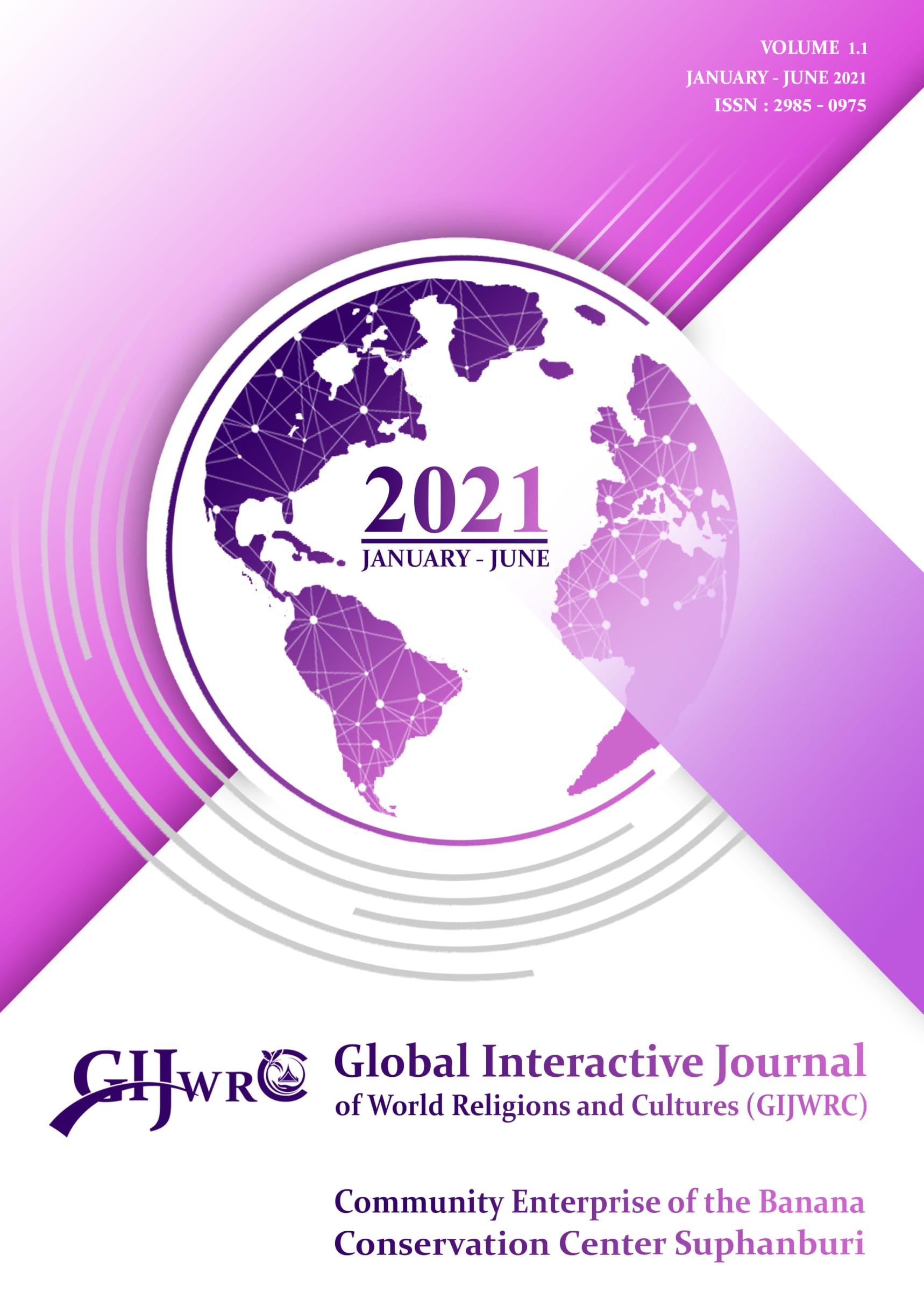DVARAVATI CIVILIZATION FOOTPRINTS, ITS MAXIMUS CREEDS AND CULTURES IN SIAM SUVARNBHUMI, ANCIENT THAILAND
Main Article Content
Abstract
The work on “Dvaravati Footprints, its Maximus Cultures and Creeds in Siam Suvarnbhumi (Ancient Thailand)” was to trace Dvaravati footprints, its creeds and cultures. The author found that Dvaravati Civilization of Nakhon Pathom, Ratchaburi and Kanchanaburi traded with India and Mediterranean countries since 3rd Buddhist Century (BE 236). The testimonial vacuum was likely lost for 400 years. It is certain that the Mons in Myanmar have been two routes migrated from Pyu-speaking Tibet and Yangtze Kiang Basin, China and they have nine times evacuated to avoid genocide of the Burmese to Siam (current Thailand) during [CE.1539-1814]. However, Diasporas always felt nostalgia and stresses on virtual culture and cultural capital. The former pertained the ever-changing set of beliefs, values, behaviors, and performances such as the Jews, the Koreans, the Irish, the Jamaicans, the Syrians, the Bangladeshis, the Rohinyas, and the Mons and so on. The latter was the nostalgia of endowment that each diaspora inherited as a member of a particular ethnic group or sub-group. Though they also carried their traditional creeds of animism, Theravada Buddhism, Mahayana Buddhism and Hinduism. Their rich cultures lost during before the third Century or around 400 years or during the arrival of Their Most Venerables Sona Thera and Uttara Thera on the Buddhist Proselytization Mission in Suvarnbhumi around Nakhon Chai Si and Nakhon Pathom in BE 236 should be revived. What needs to pursue were first the nostalgia and stresses on the virtual culture and cultural capital of the Mon Diasporas should be investigated to prevent and to alleviate their deep negative impacts, and second, the lost Dvaravati rich creeds and cultures should be unearthed to revive the root of the Siamese (current Thais) backgrounds.
Article Details
References
Blench, Roger (2018). “Waterworld: Lexical Evidence for Aquatic Subsistence Strategies in Austroasiatic” (PDF). Journal of the Southeast Asian Linguistics Society, pp. 174–193.
Brown, Jason (2020). Whether a Christian Animism. Human and Nature Online. A review of Mark I. Wallace, When God Was a Bird: Christianity, Animism, from: https://humansandnature.org/whether-a-christian-animism/ 23 November 2020.
Cœdès, George (1968). The Indianized states of Southeast Asia. Honolulu. ISBN 0-7081-0140-2. OCLC 961876784.
Jenny, Mathias (2021), “MSEA epigraphy”, in Paul, Sidwell; The Languages and Linguistics of Mainland Southeast Asia: A Comprehensive Guide, De Gruyter, pp. 855–877.
Ji na dha ja, Nantakorn Piyabhani, Phramaha Hansa Dhammahaso (2020) “An Analytical Trend in the Development of Buddhism in Mon Region of Myanmar in the next decade”. Mahachulalongkorn -rajviidyalaya University. Journal of International Buddhist Studies College. (May 16, 2020), p.1-11.
Kerlin, Park, G. (2020). Animism. Encyclopedia Britannica. Online, Retrieved 28 April 2023, from:https://www.britannica.com/topic/animism | 29 October 2020.
Manop and Banchuen Nakkarnrian (2021). Dvaravati : Belief and Religious Dimension. Mahamakut Buddhist University Sirindhornvidyalaya Campus. Sirindhorn Reviews. Vo.2 Issue. (9 June. 2021), pp.254-263.
Murphy, Stephen A. (2016). “The case for proto-Dvāravatī: A review of the art historical and archaeological evidence”. (Journal of Southeast Asian Studies.47(3); October 2016),pp.366-392. doi:10.1017/s0022463416000242. ISSN 0022-4634.
Phramaha Paritas Worakitjo (Thip-o-sod) (2022). A Study of the Buddhist Mon Community Identity According to the Buddhist Principles in Tambol Songkanong, Amphoe Phra Pradaeng, Samut Prakarn Province. Master Thesis of Arts (Buddhist Studies).Graduate School: Mahachula - longkornrajavidyalaya University. (3 June 2021), pp. 22-23.
Prof. Dr. Sakchai Saaisingh (2019). Davaravati Arts: The Early Religious Cultures in Thailand. 2nd. edn. (new improved version). Nonthaburi: Muang Boran Printing House, pp..25; 92.
Sidwell, Paul (2022). “Austroasiatic Dispersal: the AA “Water-World” Extended” (PDF). JSEALS Special Publication No. 8: Papers from the 30th Meeting of the Southeast Asian Linguistics Society (2021). University of Hawai’i Press, pp.56-72.
Za Wa Na, V. (Jun 30, 2018). “The Trend of the Role of Ramañña Nikāya in the Next Decade in Mon State”. 11 (3). The Journal of International Association of Buddhist Universities (JIABU): 194–211.


